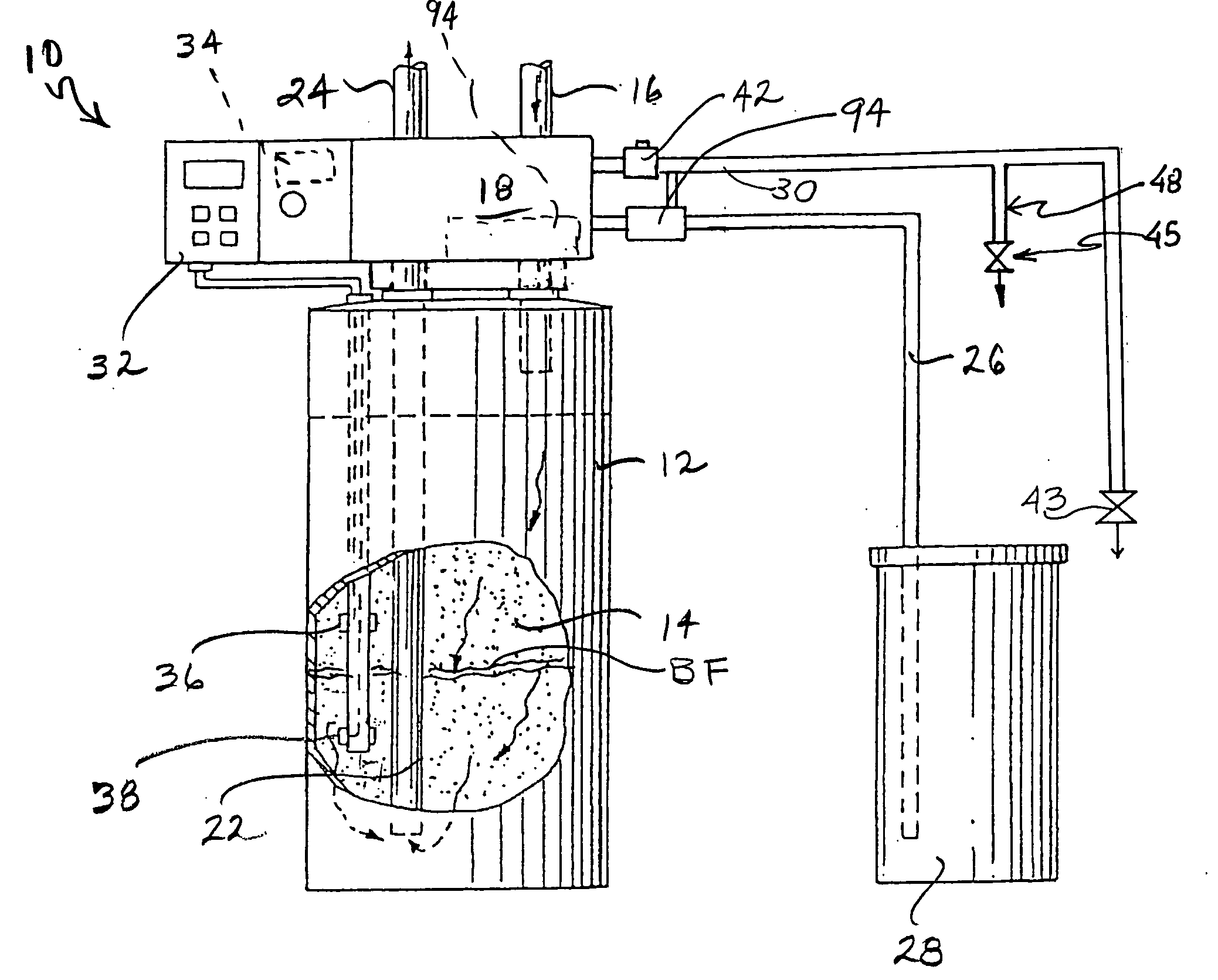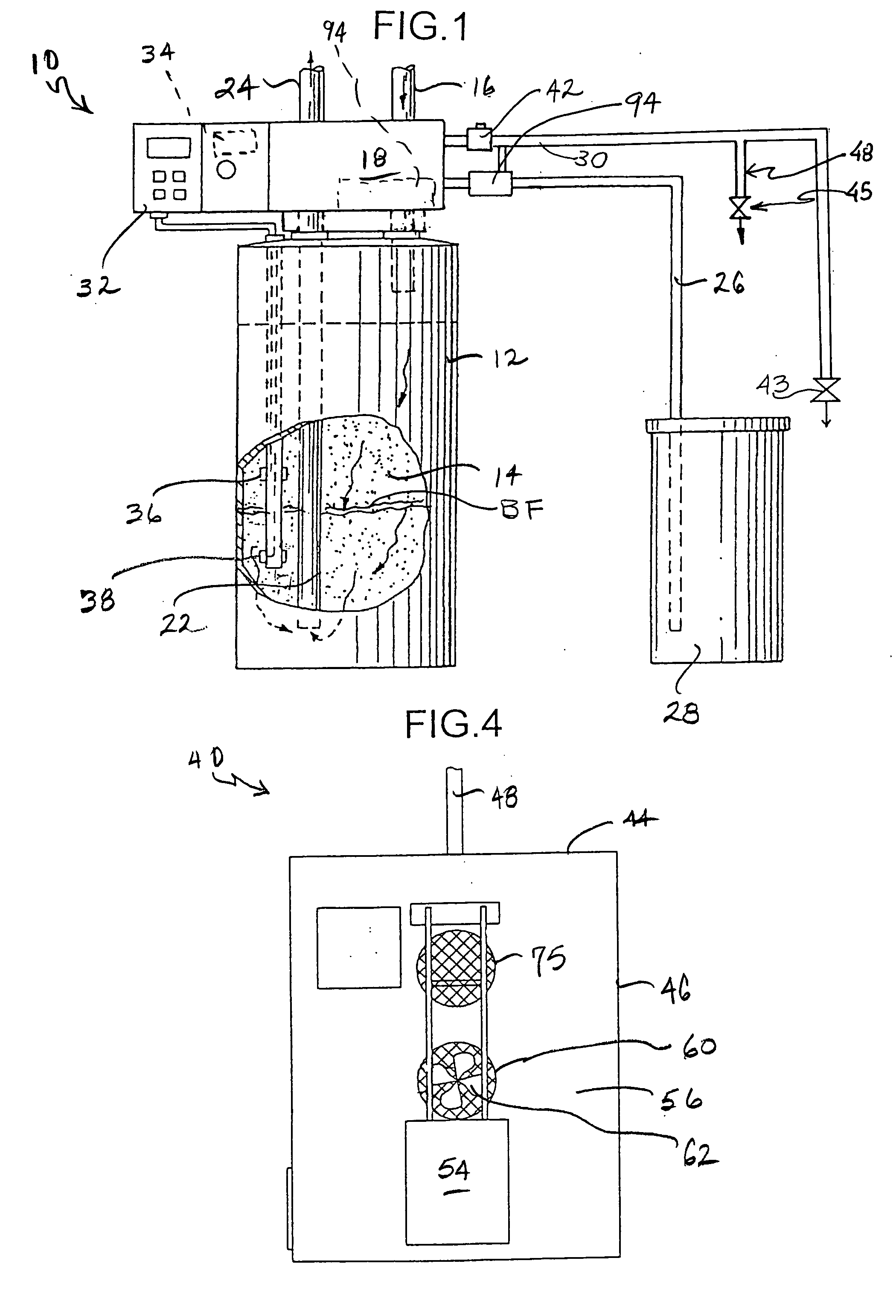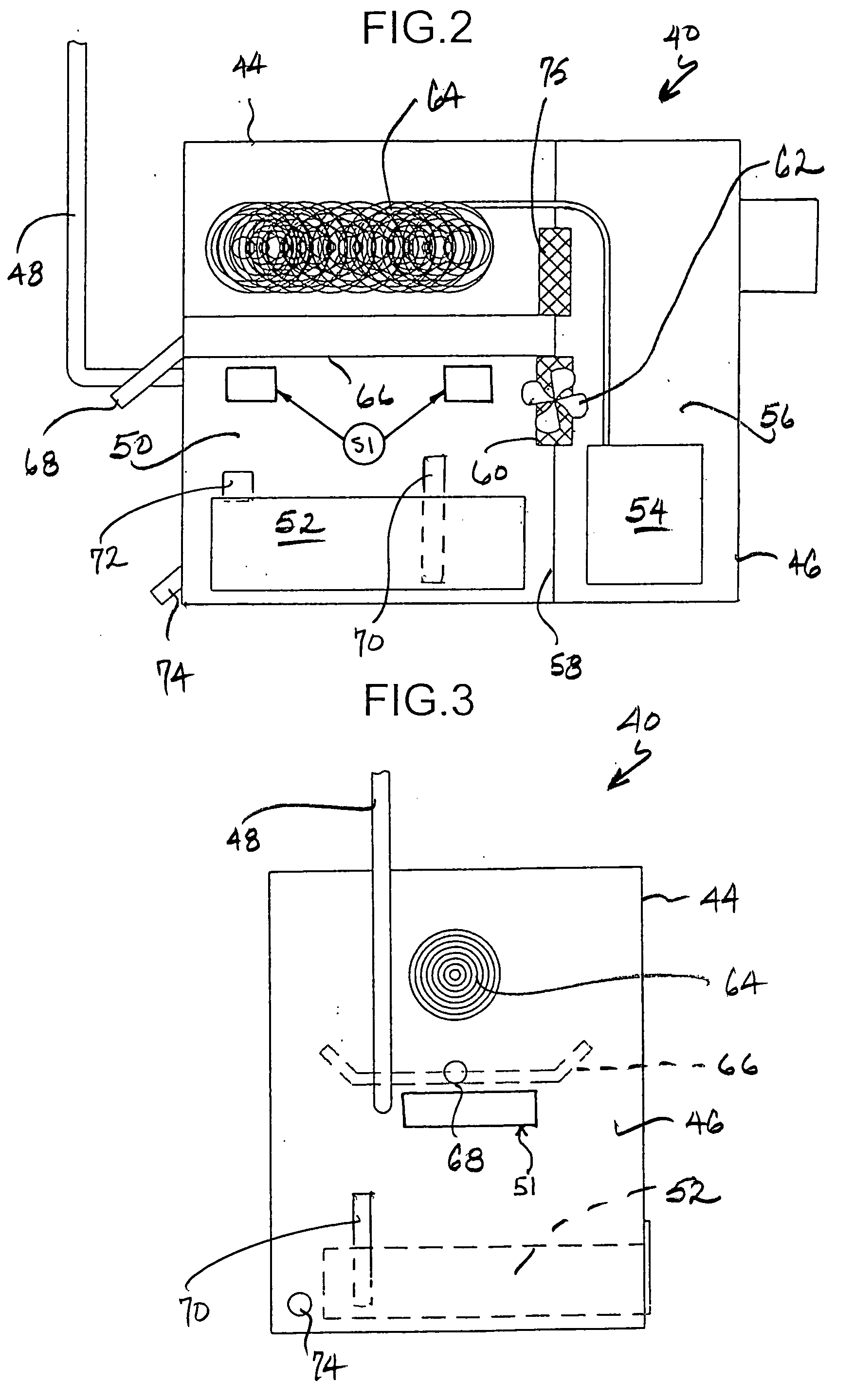System for reclaiming water softener brine waste
- Summary
- Abstract
- Description
- Claims
- Application Information
AI Technical Summary
Benefits of technology
Problems solved by technology
Method used
Image
Examples
Embodiment Construction
[0020] Referring to FIG. 1, a water conditioning or softening apparatus suitable for use with the present system is generally designated 10 and includes a water tank or main treatment tank 12 containing a bed 14 of suitable ion exchange resin. In the service cycle, a water supply line 16 is connected via a valve housing 18 which passes the water into the tank 12. The water is softened as it passes down through the bed 14 and is removed via a pipe 22 through the valve housing 18 to a line 24 which supplies the softened water to the water system. A conduit 26 extends from the valve housing 18 to a brine tank 28 which contains salt and water for forming the brine. A drain conduit 30 is also connected to the valve housing 18 and is connected to a suitable drain (not shown). A control unit 32 is mounted adjacent the valve housing for controlling the operation of the valve which diverts water as required during operation of the softener 10. As is typical in such control units, a microproc...
PUM
| Property | Measurement | Unit |
|---|---|---|
| Flow rate | aaaaa | aaaaa |
| Level | aaaaa | aaaaa |
Abstract
Description
Claims
Application Information
 Login to View More
Login to View More - R&D
- Intellectual Property
- Life Sciences
- Materials
- Tech Scout
- Unparalleled Data Quality
- Higher Quality Content
- 60% Fewer Hallucinations
Browse by: Latest US Patents, China's latest patents, Technical Efficacy Thesaurus, Application Domain, Technology Topic, Popular Technical Reports.
© 2025 PatSnap. All rights reserved.Legal|Privacy policy|Modern Slavery Act Transparency Statement|Sitemap|About US| Contact US: help@patsnap.com



